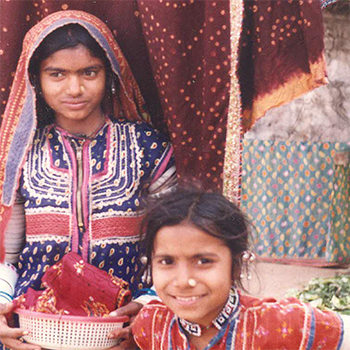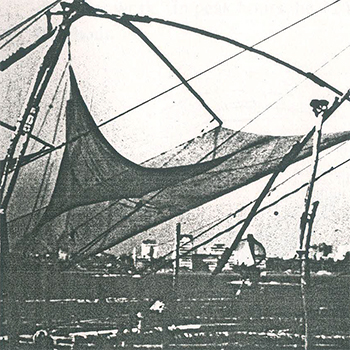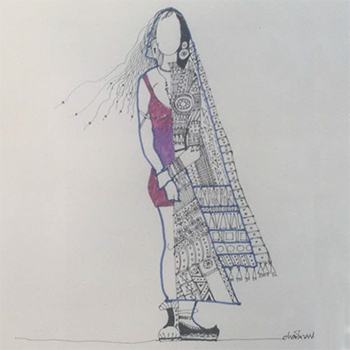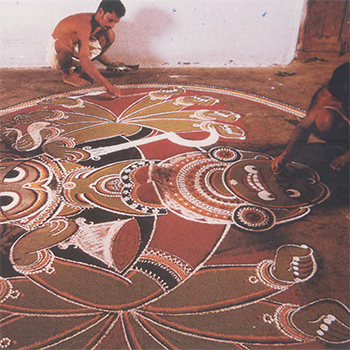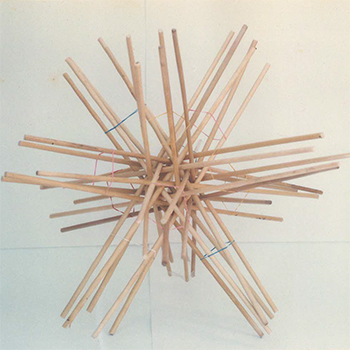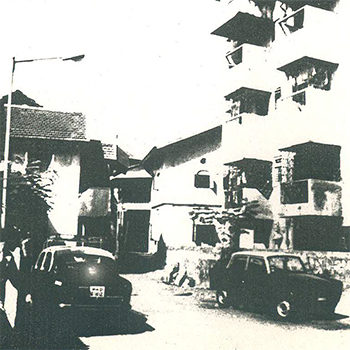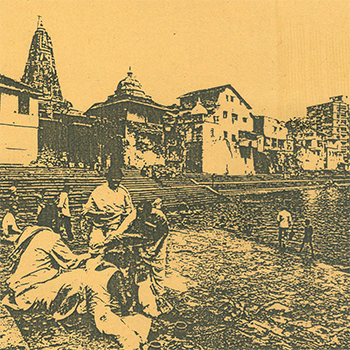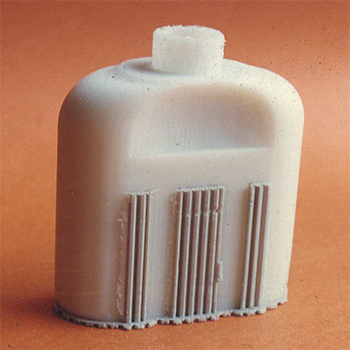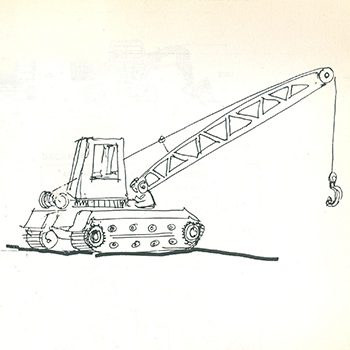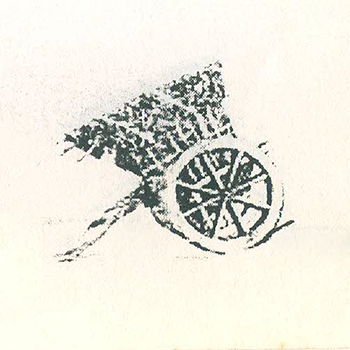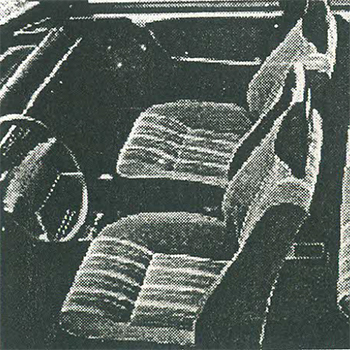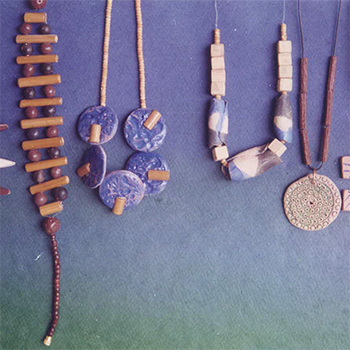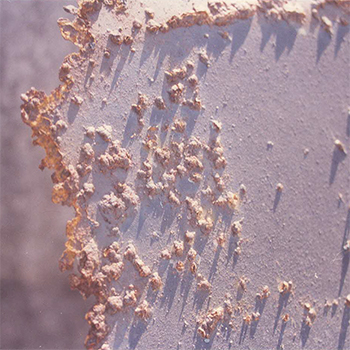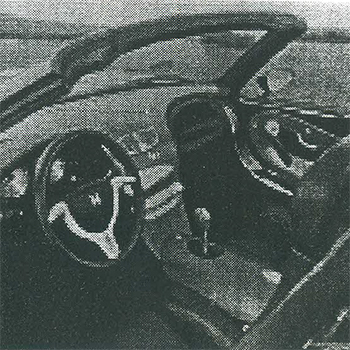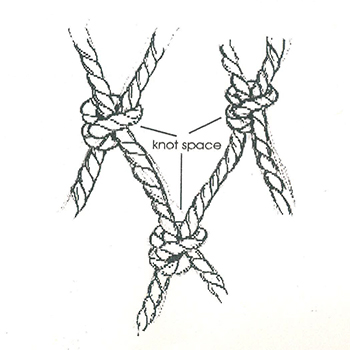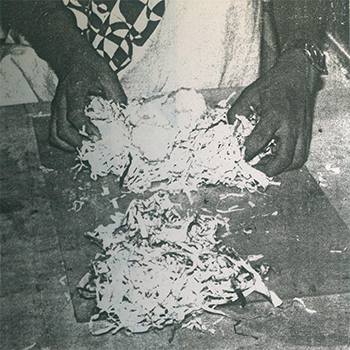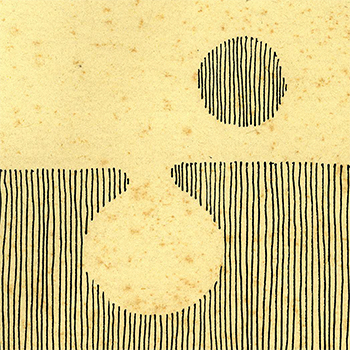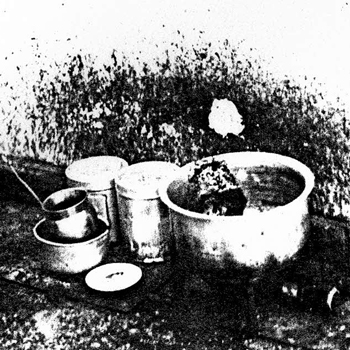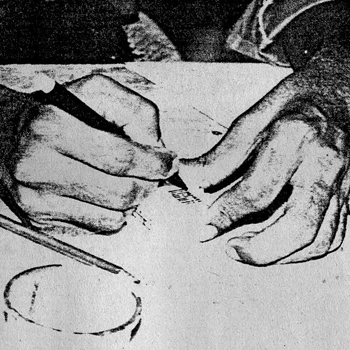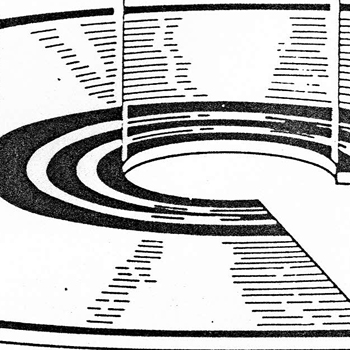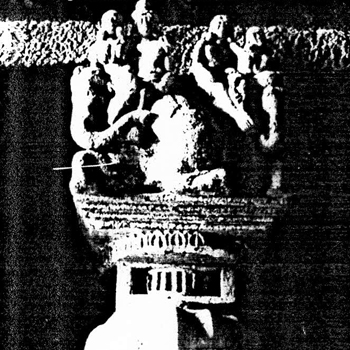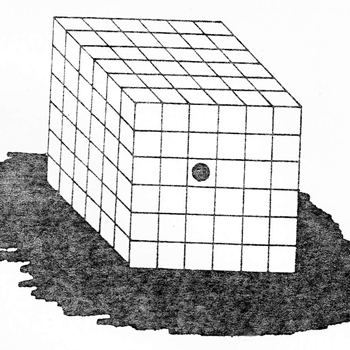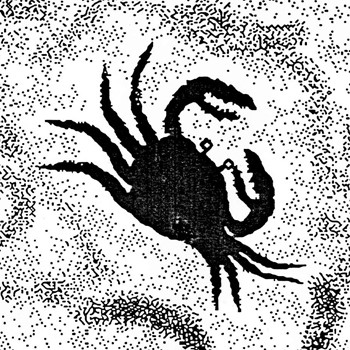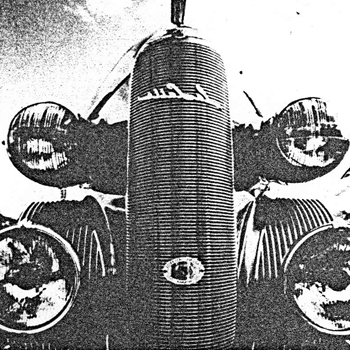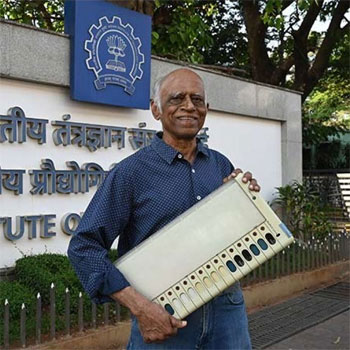Product Design 1989-1998
Batch 1994-1996
(14 items)
Batch 1996-1998
(17 items)
Batch 1987-1989
(13 items)
Batch
(2 items)
Product Design 1989-1998
1994-1996
(14 items)
by Adamya Ashk
Bamboo and Bamboo Crafts
Bamboo is an important natural resource for a country like India. Crafts in bamboo have reached a high state of development in our country. But with the coming of colonialism and subsequent industrialization, the subcontinent saw a gradual decline in the practise of crafts of all types. Bamboo craft was certainly no exception, although it continued to flourish in the rural and remote regions where other materials were scarce. Today, there is a need to see crafts as a means for economic upsurgence and as a symbol of strong cultural identity in the face of blatant industrialization. Bamboo craft is ecologically sound on the one hand, while on the other hand, it can be seen as a great employment generator (Kaley 1994). This makes a strong case for rejuvenating this craft form.
Design Input into Bamboo Craft
Design has evolved from craft. Design inputs into bamboo craft can be an important way of affecting this rejuvenation. It has the potential to bring much-needed innovation to bamboo craft, making it economically viable and competitive with industrially produced artifacts. This is something that traditional craft knowledge, which shows gradual improvement over a long time, cannot grapple with (Rao, 1995).
The Problem of Simulation
Yet designers with formal training have little or no understanding of bamboo craft. Bamboo crafts also pose a great difficulty in terms of simulation. The designer can simulate a plastic bucket and experiment with the form, but without making a bamboo basket, it is impossible to explore its formal capabilities. So, for meaningful participation of designers, methods of simulation, which provide for creativity that is free from the necessity of having the ability to make the actual products, are essential.
Apart from this, the designer has to explain his concepts to the craftsman, in which he faces great difficulty because the traditional methods of representation are limited in their ability to convey something as complex as bamboo woven forms. This brings us to the purpose of this project, that of using computers for the simulation of bamboo weave forms.
Simulation on the Computer
The computer is already an important tool for the simulation of artefacts of many materials. It provides a new way of simulating concepts in three-dimensional images. Computer-generated images also offer a certain precision, which can be used to convey the designer’s intentions in a better way than previously possible. This attribute significantly points to its use for simulating and generating images of bamboo weave forms, which can convey much more than product renderings and other methods of representation.
by Amin Thakker
Kutch is an ancient land located in the north-western region of Gujarat, the westernmost state of India. It has a rich history due to its strategic location on the historic route to India. It is bordered by the flat desert locally known as the "Rann" on the north and the east. The Rann is a unique feature found nowhere else in the world. Kutch is bounded by the Arabian Sea to the west and southwest and by the Gulf of Kutch to the south. The Kutch region can be divided into three parts, running more or less horizonally in the east-west direction. The village of Khavda is known for its printing work called Ajhrak and also for leather crafts.
The largest of the three is the Rann, extending towards the southeast. The central belt is known as Banni, a name derived from the area's rice cultivation. However, the land yields good quality grass if the rain is sufficient. It is now a major cattle breeding area, supplying milk to the major settlements to the south. The area has good potential for dairy farming if somehow sufficient water could be made available. There are no urban settlements in the Banni; in fact, not even villages are found. However, there are over forty beautiful semi-nomadic hamlets. The coastal area in the south is the most urbanised part of the region. The sea routes were a major factor contributing to their development in the past. Most of the larger settlements lie within these belts.
The entire region as a whole is very dry, and all the places you see around you get to see sand, thorns, and stones all over the place. This dryness of the land has made people very colourful in their lives. The average population density of the entire region is around 20 people per sq. They are distributed in pockets, either as a village or at a great distance. Previously, there were very few connecting roads. Now state transport buses are available and they reach almost all the villages in the entire region, as well as the tarred roads that cut across almost the entire region.
by Asok Abraham George
The underlying themes of this project are ethnicity and modernisation. The task was to identify a vernacular and historical pocket in a metropolis and study its origin and growth, its religious and cultural roots, as well as the changes due to the onslaught of modernization and how traditional culture has endured or adapted itself to the present times. The study included the place-its sights, smells, images, pulses. architecture, etc., as well as its people—their needs, feelings, desires, and fears. The vernacular pocket and its relationship with the city as a whole, the cross-cultural influence, and possible conflicts and clashes between them were looked into.
The vernacular or historical pocket chosen for the project is the ancient township of Fort Cochin, once a major trading centre but now just a small pocket in the metropolitan city of Cochin, the commercial capital of Kerala. This unique urban settlement was chosen because of the component of plurality, or the existence of multi-ethnic groups that form its population. Unlike most of the vernacular pockets that exist in other cities like Bombay, this pocket is inhabited not by a single community but by different people, with different religious and cultural identities.
The study tries to find if a common denominator exists among all these groups, something that makes it possible to collectively identify the people of this area. Due to the limitations of time, the study was restricted to the four main communities of the area, namely the Christian, Muslim, Hindu, and Anglo-Indian communities. Other minority communities which exist in the area, such as Gujaratis, Konkanis, Jews, Jain, etc., have not been included. Most of these communities are settled in Mattanchery, another historic pocket adjacent to Fort Cochin.
The study includes the documentation of people, places, objects, phenomina, activities, rituals, festivals,streets, buildings etc. A brief outline of the unique urbanisation in Kerala and the differences it has with urbanisation in Kerala and the differences it has with urbanisation in the rest of India is included in the study. A brief write-up on the history and the present scene in Cochin is also included.
The study has not ended with this report. As a part of four similar projects undertaken at the same time at different places, the study has sparked off a quest within ourselves, a thought for human values, and a hope that we shall not only become good designers, but more importantly, better human beings.
by Chandrashekhar Madhusudan Wyawahare
The term "ethnic" has a lot of importance in this fashion industry. This term has a lot of importance today. Its origin lies in the traditions and customs of India. The various kinds of cultural backgrounds have got their own colours, fabrics, and so do the stitches. It has also got its handicrafts. Because of the strong cultural background, fashion designers have been able to explore handicrafts and traditional items in a modern context.The designers are doing lots and lots of new stuff based on the glory of the past, but they are actually in the process of "search." The search for an ethnicity in the modern era.
Designers experiment with existing traditional art forms such as embroidery, mirrorwork, tie and die, and so on, and end up combining Indian designs with fabrics from the west. It ends up with a feeling that ethnicity has been explored at a very superficial level. The dynamics of a good combination are contoured by its basic patterns, for example, the ghaghras. Its basic patterns, plains or printed, are the basic things associated with the ghaghra, but topping the hierarchy is the mirrorwork and the embroidery. Easily the most formal and elegant of all the ghaghras, it stands out when worn with the backless choli, silver ornaments, and the dupatta. Is the ethnicity of the fabric found in the utilisation of the fabric?
Showing ethnic has become bolder and now seems to follow certain metaphors. Some of the designer's conceptions are very bold and are regulated by the wildness and the vibrant Indian colours. For example, Suneet Verma’s creation is symbolised by the tantric collection, which is modern and ethnic and not modern and ethnic. Sarees with exciting bustiers and salwar kurtas with dupattas in bright colours and using various design methodologies such as tie and die, embroidery with applique, painted effects, block printing with the nalamboli type scripture letter forming the border. The colours used are also very bold and pure.
by Debasish Mahapatra
Years ago, when he was "bigger,better, Bond and beyond", in those legendary Bond sagas like Dr. No and Goldfinger, Sean Connery cried out in anger: "I’ve always hated that damn James Bond. I’d like to kill him!". The rancour was understandable. For here was an image that had grown larger than the actor: a fictitious character who had gained iconic proportions as the one-man army against evil; and a celluloid series that promised to go on indefinitely, despite the falling grandeur, increasing pyrotechnics, failing histrionis, and dwindling charisma... and yet it goes on.
Such is the saga of the super secret agent who emerged out of the imagination of Ian Fleming in 1952 and went on to become one of the most popular and legendary characters, spanning four decades, eighteen films, and fourteen Ian Fleming novels, including a number of short stories. Today, James Bond is history, which is not dead but ever alive and kicking-neither shaken nor stirred.
It is a truly remarkable achievement for an intensely personal creation, created, initially, as a money spinner and a means of escape for its author. In return, James Bond 007-license to kill, has provided escape and enjoyment for 100 million readers and one and a half billion cinegoers, and has earned a permanent place in the world’s consciousness.
James Bond has become a worldwide cult figure, crossing all race and language barriers and proving he is something much more than Secret Agent 007! What is it about this character that stirs, grips, and mesmerises in celluloid as well as in pulp? Many critics and authors have attempted explanations for it: Len Deighton; Raymond Chandler; Kingsley Amis; John Le Carre. Film and Filming, the prestigious cinema magazines, stated: "James Bond is not a screen hero, he is an institution, and as such has influenced world affairs, art, music, motion pictures, and fashion."
Critics have attributed his appeal to'sex, sadism and snoberry’; the films have been panned for their unheatable blend of conspicuous consumption, brandname snobbery, colour supplement chic, comic-strip sex and violence, and technical wizardry. Fleming himself generally felt that Bond should not be analysed too closely and said; They’re reading too much into the man—he's not all that important. This may be so, but there is unquestionably something in the Bond formula which still leaves people the world over asking for more, even though the fantasy remains the same. A new world, new threats, new enemies, yet the only man who can save the world is still James Bond: England’s dream do-gooder who carries on the good work long after the sun has set.
by Gautam Satalkar
An Indian industrial designer was asked to suggest a new colour shade for the newly launched Maruti Zen. The colours popular for the similar cars by Maruti, the 800, were Maroon Red, Dark Blue Grey, and Dark Green Grey. Now the company wanted a new shade that would cater to the female market.
Study of the psychological setup of the mind of the typical Indian woman played a key role in this problem. The new colour chosen by the designer was lemon yellow, which the company officers were reluctant to introduce. The designer somehow convinced them, and in reality, the colour shade proved to be very popular, especially amongst women.
Color and light play a key role, though generally unrecognized, in our lives. The above example shows the same. It is an example that shows the same. It is an example of the proper use of colour for the product. But many a time, the colours are used without giving proper thought to the psychological and psychological effects of the colours. This leads to bad colour design, which can cause anxiety, stress, and visual disorder and be the host to many other problems.
There have been numerous attempts by people all over the globe to understand the role of colour in human life. Many experiments have been done in history to detect the influence of colours on the human mind, both scientific and mystic. The main hindrance towards creating a set of identified rules or an elaborate theory on the behaviour of the human mind with respect to colours is that the results of all such experiments are subjective. Now, the days have changed and science has emerged with new tools for research. Today, thanks to sophisticated techniques of research and analysis, we know that colour affects cortical activation (brain waves), functions of the autonomic nervous system (which regulates the body’s internal environment), and harmonal activity, and that colour arouses definite emotional and aesthetic associations. In short, our response to colour is total; it influences us both psychologically and psychologically.
by Lalitesh Mandrekar
Broadly defined, a joint is a structural relation between two individual bodies so that mechanical forces are transmitted from one body to the other. But many other aspects, such as aesthetics and compatibility with the system or product functions, also contribute to designing a joint. This project is a study of various joints in modular systems and focuses on problems related to panel joinery systems. Various principles in joinery are analysed and some different ideas are suggested for the joining of FRP panels.
- About modular joints:
- Joints in modular systems are designed for a particular set of modules considering their sizes ,shapes, materials and variations.
- Modules and joints are developed together, and joints add to the character of a modular system.
- Joints determine the configuration of modules.
- They allow fast assembly and knock-down of the prefabricated modules.
- Modules and joint elements are reusable after knock-down without any work on the material.
by Madhu KS
by Poornima K Shenoy
by Satish Patil
Today, we, as users, are surrounded by thousands of products, each contributing to our lives in some other way. The list of products is endless, from tooth brushes to sky-scrappers to... All products are designed to perform certain functions, physically or otherwise. The vehicles we use are not only for transportation but also as status symbols. The clothes I wear show which class I belong to. I must have a wall clock that will not only show time but will match my sense of beauty and go along with the decor in my drawing room. The shoes that I wear for going to the office will be different from the ones that I will prefer for a picnic. Thus, I have different criteria as to what my shoes should look like in different conditions. Electronic equipment in houses which are more playful. Thus, under conflicting visual requirements, we live in a complex visual environment which is generated by thousands of man-made objects. And at times, there are chances that it goes beyond control.
A quote reads, "We live surrounded by too much visual squalor that is man-made, and living in a visual slum is hardly likely to foster the development of an emotional experience." Each product form is designed to have certain aesthetic implications and expressive or symbolic meaning. And if we don’t control it, there is the possibility of visual chaos. Before looking at these aspects, let us look into the historical perspective of the evolution of form and the development of the human sensitivity towards form.
by Shantanu Panse
Tooling is a prime consideration in the decision-making process involved in the planning of the manufacture of any product. It is obvious that because the tooling costs are part of the manufacturer's investment, these costs must be recovered as part of the price of the product. Therefore, before the decision is made to produce a product, the manufacturer must make very detailed plans with regard to the identification of the required tooling and the estimating of the tooling cost. When the tooling costs have been determined, they will be combined by estimates of manufacturing costs, marketing costs, desired profit margins, and various other considerations. It cannot be over-emphasised at this point how important it is that the forecasted costs are accurate. This is particularly true for the estimated tooling costs. In most industries, the tooling costs represent a substantial part of the investment. Consequently, an error or an underestimate of the total tooling costs could mislead the management into undertaking an unprofitable venture.
The use of plastics as tooling materials has provided many new opportunities for tool engineers to advance the state of the art and improve tooling costs. The very dynamic nature of the plastics industry promotes constant change and improvement. Through the continued development of new materials, new applications, and new tool fabrication techniques, the plastic tooling industry has steadily grown.
by Sunil William Moothedath
This project, entitled fivefoldness in 2D and 3D, was taken up due to the special relevance it has that it is one of the most widely occurring forms of symmetry in nature, especially in the plant kingdom. In this project, it was decided to look into the meaning of symmetry, the various aspects of expression of fivefold symmetry and its possible connection with weaving in bamboo.
The first part of the project involves mainly the documentation of symmetry and fivefoldness. The second part consists of the exploration of bamboo weaving in 2D and its exploration into 3D.
The main aim of this project was to get a better understanding of symmetry, especially fivefold symmetry, and to open a new direction for exploration into bamboo weaving using fivefoldness in 2D and 3D.
by Toa Mukerji
"Before the city, there was a hamlet and the shrine and the village: before the village, the camp, the cache, the cave, the caira, and before all these, there was a disposition of social life that man plainly shares with many other animal species." – Lewis Mumford, The City in History
The aim of this study was to study the conflicting coexistence of ethnicity and modernization arising in a city.
From various other aspects denoted by this idea, that of studying the life of a community as a whole; from their arrival to their present status; the development of a lifestyle in its totality, within the fabric of an urban settlement, formed the central concern of my efforts.
The city of Bombay offers many such examples, existing in vernacular pockets throughout the island. The existence of such havens of tradition can only be explained by looking towards the development of Bombay, which has not been like that of any traditional Indian city. Out of these, Girgaum, Mazgaon, Bandra, Bhynder, and Mahim come to mind immediately. In all of these precincts, communities have settled more than 200 years ago, some even 400 years ago, in search of economic stability around or near centres of occupation.
The vernacular pocket of my interest was Mazgaon, where the 250-year-old Matharpacady village exists, inhabited mostly by the East Indian Christian community. My study includes a brief introduction to the city of Bombay, the pocket and its origin, the images of the community-its roots and traditions, the families living in Matharpacady-their present status and growth with time, the changes with time in the traditions and lifestyle of the people in Matharpacady and in prominent land marks as a result of the onslaught of modernization.
by Zoeb Kanorwalla
1996-1998
(17 items)
by Abhinav Dapke
Introducing new products at an increasing rate is critical for remaining competitive in a global economy; decreasing product development cycle times and increasing product complexity necessitate new ways to realise innovative ideas. In response to these challenges, industry and academia have invented a spectrum of technologies that help to develop new products and broaden the number of product alternatives.
Most designers agree that "getting physical prototypes fast" is critical to exploring design concepts. The sooner designers experiment with new products, the faster they gain inspiration for further design changes.
The key idea in rapid prototyping is the decomposition of a difficult problem of manufacturing a complex 3D component into thin slices that are then physically realised in some manner. These slices are stacked and joined, giving us the required physical prototype.
During the art-to-part conversion in RP, none of the traditional manufacturing steps such as process planning, tool design, and material movement for machining are required. What is required is only designing the part and generating it with the help of software (using different operations).
by Atul A Rajwade
We humans in this world are in a situation where things are getting automated and new gadgets, machinery, and equipment, as well as computer software, are getting stuffed into our immediate environment.
It is not easy for humans to learn new things and handle new equipment. Unless there is a certain pattern and code applied while designing the equipment, it will be very difficult to operate a new machine. So one must take into consideration how the man will operate a vehicle or equipment that he hasn’t seen at all. This is known as "control motion expectancy" and, in ergonomic terms, falls under the chapter of stereotype and compatibility. In this special project, some research was accomplished on this topic, especially regarding material handling equipment. Also in this project, an experiment was carried out to determine the stereotyped reactions of the people controlling material handling equipment (the movements of which are taking place on the rear side of the operator).
It is postulated that, greater the degree of compatibility, the less re-coding must be done to process the information. This in turn results in faster learning, a faster response time, fewer errors, and a reduced mental workload.
by Charuta Bobade
In the olden days, palakis or menas, which are structures carried on shoulders by slaves, were a popular means of transport. Other means of transportation were riding on tamed animals like elephants, horses, donkeys, and camels. Then the carriages were combined with animals to form bullock carts or horse carts. Let the transportation be of any kind the owner uses to make it himself or under his supervision. Everything in the vehicles has the personal touch of the individual using them, from saddles on horses to cushions and curtains in Palakis, to the point of making them a work of art without sacrificing their functional value.
Personalisation is a psychological need for human beings. If there had been a natural difference in the looks of people showing their educational and economic status in society, the need for personalization would not have been there. This need for personalization is specifically observed in objects used by human beings. We like to create our own environment around us. In today's time of "mass manufacturing," we have to add our own touch to the things we buy, to give them a sense of belonging. This gives scope to our creativity and adds colour to our lives. This gives identity to the product. Thus, anything we buy, may it be a bag, a house, or even a car, we like to add our personal touch to it. While doing this value addition, we might borrow ideas from elsewhere. Thus, we find lots of car accessories to be direct derivatives of house accessories.
by Devesh A Desai
If the exterior shape is currently born more out of technology than art, the interior remains a domain almost entirely dominated by creative instincts. There are the inevitable ergonomics and human factors to be considered, of course, and the package envelope developed according to the engineering rules has to be the starting point, but the final appearance of the interior is essentially decided by artists and designers.
As in the domestic and commercial fields of interior design, there are strong outside influences coming to bear on the actual style of how the car looks inside, what is acceptable in taste, and how far the thresholds of appearance and material usage can be pushed. For example, it took several years for cloth fabrics to meet the durability standards required for high-wear areas such as a car seat surface, and even longer for plastic moulding technology to allow the production of a rattle-free full-width facia.
Within the industry itself, the interior designer’s job carried much less prestige than the major role of creating the outside shape. Exteriors carry a much stronger identity, both for the company and the individuals responsible, although ironically, it is the interior that the buyer has to live with more closely throughout his period of ownership. No car was ever bought on the strength of its interior alone, however.
During the initial post-Second World War recovery in Europe, the priority was simply for cars to fill the void of independent transport. As long as it worked, it was acceptable in the strong seller’s market that prevailed. Practical black or natural tan interior colours in any hard-wearing material were the rule because they blended neutrally with all exterior colour ranges. There was little thought for comfort in the modern sense, none of the sophisticated moulding techniques for foam. Trim and carpets were tailored, stitched, and clipped in place using methods not far removed from the traditional coach-building crafts.
Generally, though, in the period up to 1970, little creative talent was displayed in the car interior. There were distinctive styles, such as the traditional wood-veneer fascia panels of luxury models, which found their way right down to American fashion for color-keyed interiors. However, most popular vehicles exhibited a distinct lack of integration, with painted dashboards, exposed seat runners and lower frames, visible window mouldings, and an abundance of exposed screw heads. Instruments were still separate gauges with bright rims, black faces, and white spindly needles covered by reflecting glass. Switches were placed wherever there was room on the fascia, and steering wheels had black shiny rims mounted on sprung wire spokes. In large corporations, interior design work was physically divided at the steering wheel, with one team handling everything in front and another handling everything behind. The segregation showed clearly in the product.
The role of interior designer has changed and is expected to change further in the future. Interiors of automobiles have changed and will continue to change. Car interiors are given equal attention as this has helped in adding real value to the vehicle as a product. Though the interior designer is not much of a celebrated figure, media attention is picking up on this aspect too. And businesses will undoubtedly profit from it.
by Jawwad I Khan
The personality of a person is a very complex issue. There are various factors that contribute to the development or projection of one's personality. A person's personality will to a great extent depend upon the family background, its values, and beliefs. A person may either be a strong follower of these beliefs or become rebellious. This type of behaviour is very much influenced by the person's influence in the outside world and his experiences in the past.
The physical attributes of the person create some sort of halo effect. It may either uplift or lower one's personality are,
- Physique: body dimensions
- Appearance: skin colour, looks, dressing, hair style, body make- up etc.
- Behaviour pattern: the person's body gestures, behaviour, and communication styles while interacting with others.
Personality is definitely moulded in some way or another through the education or knowledge one attains in life. The person's personality or image is often weighed against his qualifications in social circles.
The culture factor plays an important role in projecting one's personality or image. A person from a rural area may project a different image from that of a person residing in an urban area. This is actually due to the cultural differences that exist between the two. This difference can be minimised by exposing the person to a culture other than his own and by the person's willingness to undergo change.
Human psychology is a very important factor in projecting a person's actual image. With a change in the individual's mental state, a charming personality can suddenly become arrogant and irritating. The temperament and patience of the person play a very important role in image projection in the changing surroundings and events that take place.
by Jevak Badve
In the midst of the never-ending tussle of work and work, one must make time to entertain oneself. He must find a way to entertain himself. It could be a Chaplin film or a practical joke; a chess game or an afternoon nap; a mug of coffee or a casual whistle. checking e-mail, watching a movie, traveling, or learning.
Thus, in order to stay "alive," each of us has devised some method or another. Some people simply work for them. They range from musicians to painters, illustrators, and film directors. Computer hackers to gossip mongers, magazine editors to humble cartoonists.
by Nachiket Tahkur
The mad scramble for power, authority, and one-upmanship has taken a toll on the entire human race. Every other person is seen clamouring for more. He can do anything to get hold of the "magic" that will help him reach the top; however, it is not at all simple. To accomplish the impossible, he must overcome numerous physical and mental challenges. To fulfil his never-ending needs, he taxes himself in many ways. This race to remain on top destroys his psychological and mental stability. Every now and then he takes help from something or other to overcome the anguish and disturbance in his mind and body. Physical ailments can be treated with surgery and other methods. What is difficult to achieve is mental stability. He requires a companion to whom he can relate in times of distress.
Secondly, the situation in which you are not under any kind of tension or stress For example, all the leisure activities are done in solitude. It can be talking endlessly on your phone to your girlfriend, two housewives talking on the phone, people watching television, reading, or getting lost in sweet memories. People often tend to fiddle with the things they lay their hands on, so give such people some interesting alternatives.
by P N Chakravarthy
An auspicious beginning to any task is with "Sri Ganesha," the most beloved of all gods. People have an emotional attachment to this god. They feel closer to this god than to any other; perhaps this is why they take more liberties when creating forms of Gajanana, whether an idol or a graphic image. For example, people accepted the Ganesh form as a paper weight, flower vase, pencil box, etc. It has become a decorative piece with a lot of expression. Another reason is that the god having an elephant head and a human body lends itself to very interesting combinations. This phenomenon of variation in a given form is known as "mutation," though this is not its dictionary definition.
Mutation is the process of deforming by removing a material part. Mutilate means to damage by breaking, tearing, or cutting off a necessary part, destroying the use. God's form is shown in such a way that it lost its original identity as a divine image and became an artist’s creative character. Here mutilation is not in the literal sense, it is transformation to a great extent. People are depicting the elephant god form for many different purposes, so the transition is too much.
Mutilation is not only because of Ganesha's popularity, graphic potential of this half-human, half-animal body gave enough scope to create so much of his interesting form. Not only that, but the psychological attachment that people have with this god is also responsible for this. It is not possible to mutilate other god forms as it is happening with the elephant god form because many factors are involved in this, including sociocultural factors, psychological factors, and religious factors.
by Parag Trivedi
Jewellery is a decorative art, and what matters is not the words that can be coined from it, but whether or not it gives pleasure to the wearer and spectator.
India's jewellery industry is on a scale that few can match. It appears that a unique ornament was required for each part of the human body. However, the significance of Indian jewellery extends beyond its size; in terms of variety and aesthetics, it is a part of Indian culture.
by Patil Bhushana
Sheet metal is currently being used extensively in a variety of product assemblies. Though commodity and engineering plastics have contributed a lot towards replacing the metals used in products, for specific applications like heat, stress, durability, and some stringent working conditions, one has to go for the metals. As product designers, we spend the majority of our time designing parts and components for assemblies using sheet metal.
During the design stages, the designer always specifies or assumes some of the materials for the final product that will be sold. For this material selection, the designer has to be really keen about the materials and their behaviour in practice. Also, he should be able to judge the material's susceptibility and durability. To decide in advance on these factors, the designer should take into account some guidelines that will help him make a decision.
The majority of the time, the product designer works with sheet metal as a construction material. For the designer to specify the material for any component, he must understand the material's limitations and advantages in order to get the most utility out of the product and material from this selection.
The purpose of this topic is to set guidelines for the designer that enhance his knowledge of what he can do to reduce the very high cost of failures caused by wrong material selection or wrong design of the components. Because design is the first stage in the launch of any product, taking proper care in selecting the material can save a lot of money rather than repairing the mistake after the product goes into production.
So, in terms of economy and life efficiency, the designer should always have some guidelines in hand as a basis for the selection of materials here, particularly sheet metal. The majority of the sheet metal components are either stamped, formed, bent, etc., or designed with some special techniques like edge folding, denting, drilling, etc. When choosing metals, the main consideration that draws attention from a product design standpoint is the treatment given to the open edges of sheet metal, as many problems such as:
-Edges are the starting points of corrosion.
-Open sharp edges in assemblies can cause some injury.
-From a design point of view, edges are the major areas that give strength and shape to the sheet metal component.
-Open sharp edges are neither aesthetically appealing nor adopted as design features in the product.
-At the edges, the anticorrosive coatings also become inefficient because of the non-uniform thickness of the coating associated with the open edges. As a result, the edges are given the most attention in this topic.
by Pradeep Joseph
The study of automobiles is like an endless sea. It's easy to get lost and not reach the shore. It requires the experience and dexterity of a seasoned navigator to get you on shore. The coachbuilding industry was heavily involved in the construction of the cars back then. Because of the method of fabrication, many of the cars were custom built, much like a horse-drawn carriage or a truck.
Wood was the chief material used during those times to construct the body shell with metal joinaries. Metals such as stainless steel and alloys such as brass were widely used for decorative purposes.
The headlights, windshield framework, horn, and rearview mirrors, among other things, had a shiny metallic appearance. The theme was carried through to the car interiors as well.
by Ratnam B V
by Sandeep Thombre
What would a modern civilised man be like without the soft art of weaving that surrounds his home with comforts and lies with luxury?
Weaving is one of the oldest crafts. The best part of the weaving craft was that it did not require any tools for working. It all started when men started interlacing the twigs of trees beside the river, which evolved into a weave. The same principle of weaving was developed and explored further with different materials, taking into consideration the physical properties of the material, and going further to make woven cloth from fibers.
Weaving began by creating a flat surface of 2D form in the form of mats as needed. But with the influence of pottery coming in, some flat weaves were wrapped around the clay form, which evolved into a 3D form through weaving. Then came the evolution of the woven basket. Woven baskets are the best examples of 3D forms created through weaving.
by Shikha Varshney
During the early stages of design exploration, designers and architects tend to treat freehand sketching as a mirror of their minds. The spontaneity of conventional sketching is undoubtedly important for the designer’s thinking process. CAD systems and their contrived interfaces do not offer the advantages that sketching does. But, can modern technology offer a tool that the designers would readily accept for their creative explorations?
The research is based on a visualisation of a hypothetical system in which the designer creates a representation of three-dimensional shapes of reasonable complexity while sitting in front of a terminal. Using his gestures and limited speech, he inputs into the computer an online representation of shape. This feedback is available to the designer live on his monitor. The experiments reported here test this hypothetical system using simulation.
Gestures involve spatial movements, and they could be more convenient tools for the designers to express spatial ideas. This paper aims to identify the potentials and limitations of natural gestures as a source of shape information by focusing on shape modelling in the computer during the design process.
by Shyam Sunder B K
Every object is not just a shape or form. When a craftsman creates it, a definite design is worked out through basically organic or geometrical shapes. When the designs are repeated on a surface, a whole rhythmical composition emerges. A rhythm is worked out by relating the size of the motif to the surface by alternating positive and negative space or varying the size of the motifs. Design can be two- or three-dimensional, projected through texture, color, and the variations throughout created by the interplay of light and shade in an object. Man has always tried to accentuate certain basic qualities of materials through further ornamentation. These methods could be painting, carving, lacquering, planting, glazing, inlaying, etc.
This study examines a few examples of inlay craft from the past, their analysis for motifs and materials used, the origins of this craft in India, the types of inlay that were used, and specifically inlay on wood. Inlay work is very pleasing to the eye and can afford a good deal of aesthetic pleasure. This craft has been attempted on a variety of materials, including marble, metal, and wood, with inlay materials such as mother of pearl and coloured stones on marble, tortoise shell and sea shells, animal bones, gold and silver on metal, ivory, plastic, natural-colored wood, and so on.
It is interesting to understand this process of inlay and try to formulate a rule that will direct us to apply this technique to materials that have not been tried so far. Another important aspect is that in the present world of imitation, craft is losing its importance, which is not a positive sign. So it is important to develop this craft and find an application in the utility area that can be easily mass produced.
by Suparna Dani
by Yogesh S Dandekar
Man has always needed three-dimensional expression, and paper mache is a cheap and easy material to use that has the advantage of drying naturally to a hard and durable substance without necessarily having to be baked like clay. In IDC, some work has already been done on the paper mache and its techniques. This project is a phase of this study devoted to the research of paper mache in various applications in IDC.
By the end of the second century AD, the Chinese had invented paper, made from mulberry bark, cotton, vegetable fibers, and linen rags. Papermaking was slow, laborious, and therefore expensive, so it would follow that good things were to be made from off-cuts and scraps. Two paper mache helmets, toughened by lacquer, that survive from this period are the first examples of paper mache. Paper mache started getting used extensively for elaborately decorated and ornate furnishings that we see in museums. But the decline in the use of this material was revived by the French in the 18th century. Paper mache actually means chewed-up paper. Trays, boxes, and even furniture were often made with inlaid pearls.
1987-1989
(13 items)
by Prasad Boradkar
This project's goal is to investigate the relationship between space, time, and music. An attempt is made here to briefly show how space and time are used to advantage in music and how music is modulated to create effects of space and time.
There can be two distinct approaches for conducting this type of study. One would entail selecting a specific musical form, such as rock music, Hindustani classical music, folk music, or any other, and then studying how spatial and temporal effects are created in that musical form. This would require a thorough study of that particular form of music and access to a large number of compositions in that style.
The other approach would be to keep the spectrum of music choices wide and demonstrate through various forms of music how spatial and temporal effects are achieved. The method followed here is the second, as the first necessarily requires extensive knowledge of one particular form of music. These ideas and interpretations are personal and thus highly subjective.
by Anil Kumar Gupta
Drinking tea has become a ritual. Tea has become a "social drink" and is consumed in enormous quantities. Surprisingly, about 350 litres (3600 cups) of tea are consumed every day in IIT during the working hours (9 a.m.–5 p.m.).
During these hours, no one is officially permitted to discontinue his work and go for tea. But almost as a ritual, most people drink tea twice a day between 9 a.m. to 5 p.m. Do we consume tea only for its warm, stimulating effect, or do we have other reasons too? This inexpensive drink has so widely influenced people that it drives hordes of them towards itself throughout the day. Someone has aptly commented that IIT is engulfed by a "tea phenomenon." This is an attempt to look into this "phenomena." It seems futile to convince people that it is a waste of time (if one thinks so). It would be preferable to understand what people want and to provide them with certain basic amenities so that time is not wasted in this process (tea drinking).
Though the study could be done for the amount of tea consumed in 24 hours in the whole of IIT, we have decided to limit ourselves to studying this "phenomenon" only between 9 a.m. and 5 p.m. The study will also be limited to the working areas (administrative and academic) of IIT and not include residential areas.
by J. Bhaskar
-Better Communication
-Training of managers
-Teaching of abstract concepts.
Here an attempt has been made to develop visual symbols for various terms associated with assets and liabilities that are commonly used in a business management situation.
by K. Puhazhendi
The robotic finger is an end effector, which is called a gripper. The gripper is the device mounted at the distal end of a robot arm, enabling it to pick up workpieces and hold, manipulate, transfer, place, and release them accurately in a discrete position. Thus, the gripper is an all-important mechanical interface between the robot and its environment, without which, in many circumstances, the robot cannot function effectively, irrespective of the degree of sophistication it may otherwise possess.
The project consists of two parts, namely, a study of existing gripping mechanisms. The goal of this work is to provide the designer with a database of various gripping mechanisms and their related biological mechanisms so that the designer can link the two approaches to solve specific gripping problems. This is done by giving a rough classification based on various parameters like type of mechanism, scope of utility, etc., of available gripping mechanisms and certain biological grippers. A study of their operation is provided to help the designer understand the fundamentals and develop his own classification methodology suitable for his applications.
by Madhuri Vetsa
-Product conceptualization
-Drawing
-Prototyping
-Mould making
-Final Production
Once upon a time, the whole process was solely controlled by people and machinery, but now computers are extending their utility to these areas as well by having CAD for engineering drawings and CAM for manufacturing processes. However, there has been no such computer input at the product conceptualization level, which is the stage in which the designer has the most creative involvement. It is at this stage where the problem is understood, decisions are taken in terms of volume, size their shape and finally decisions of details, graphics and colours etc. This lack of computer support and help in this area drew interest, and thus this became the area of concentration for this study.
by N. Prasad
A child, with the assistance of its parents, starts recognising things around him. He starts developing his own vocabulary and, within a short time, starts identifying the objects correctly. He can recognise a car as a car, a cow as a cow, a TV as a TV, a shop selling ice cream, etc. The children of these days are even smarter; they are able to operate a TV, a tape recorder, a VCR, etc., which were unheard of by an adult some 15 years ago.
We can judge the capacity and capability of the human brain if a child can correctly recognise everyday objects, even as more and more new objects are introduced. It assigns different meanings to different objects and helps to differentiate clearly between two types, two classes, or two families of objects.
The number of products that are being introduced into the market is increasing day by day. These products were designed to meet basic and higher needs, as well as some that were designed to meet very minor human needs. People can clearly identify the product or recognise the class or family to which the product belongs.
The degree to which the product is recognised depends on several factors: the person's value system, cultural background, relationship with the product, environment, and other demographic and psychographic factors related to the person recognising the product.
by Ramamurthy Shastry B. G.
Computers and their applications have evolved along with storage media and their capabilities. Every time the storage density increased, it resulted in new applications with better and better facilities for the users. While the first computers occupied the space of a room with very few arithmetic and logical functions, the latest personal computers with portability (less than the size of a briefcase) can do better than big minicomputers.
The following table provides a summary of some of the characteristics of personal computer storage media, both currently available and under development. But it is to be noted that no one medium suits all applications, nor can one generalise the suitability of a particular medium to a specific environment. Each has its own advantages and limitations.
by Rashmi Gothi
If we were to observe all the columns that exist in Hindu architecture lined up in one long row, we would be overawed by the countless forms their outlines define, fascinated by the range and complexity of motifs that adorn their narrow surfaces, and confused as our minds would attempt to segregate and find connections so as to absorb the essence of these unique structures. The richness of motifs and forms is exemplified on the one hand by the surrounding structure, which offers an immediate context, and also by the fact that the information these forms communicate is at varying levels of obvious and symbolic. The variations result from a well-thought-out, predetermined principle rather than a mere juggling of shapes and images. The perfection of form here does not mean a display of physical beauty, but the adequacy of compositional outplay to the significance and inner meaning of the image.
In hindu symbology, the straight is considered active and dynamic. It penetrates, cuts, divides, and disrupts. The movement of the straight line runs into infinite space. It is bodyless and limitless. The forms predominant in the vertical axis are regarded as being in the nature of fire and standing for divine aspirations and illumination. They are imagined to rise upward, raising the spirit of the beholder towards a vision of divine truth.
Hence the column is accorded great importance in Hindu architecture, symbolising as it does a structure that was built to transcend the space and time in which it was erected.
by Ravi T. Reddy
Papier mache is a modelling material consisting of a mash of paper used with a binder and moulded round a shape to make functional and decorative objects. It is a cheap and easy material to use and has the advantage of drying naturally to a hard and durable substance without necessarily having to be baked like clay.
This craft of making objects is an ancient one. Soon after the Chinese discovered how to make paper, 2000 years ago, they began to experiment with papier mache. The interest in this craft declined for hundreds of years until the French revived it in the 18th century. They called it "papier mache," meaning literally chewed up paper. They used it to make trays, boxes, and even furniture that was often inlaid with mother of pearl.
India also boasts of a papier mache tradition. Especially so in the Kashmir region, where highly finished decorative articles like small boxes and containers are made. Papier mache craft forms are an important part of Kashmiri handicrafts. Traditionally, in rural areas, they are sealed with papier mache. This both seals the tiny holes in the container and strengthens it.
by Shah G. A.
Thinking is central to human existence. It is not only habitual; it is compulsive. We gather information from the environment with our senses and process it. Thus, in essence, thinking is information processing. It requires words, abstract concepts, and images. When we think using words – as we almost always do – we are indulging in verbal thinking. This is characterised by inner speech. Thinking with abstract thinking When thinking involves visual images, it is called visual thinking.
Visual and verbal (or abstract or mathematical) thinking are complementary by virtue of their differences in structure. Verbal and mathematical symbols are strung together linearly in conventional patterns such as those afforded by grammar. Mentally tracking these linear structures automatically enforces certain thinking patterns. By contrast, visual thinking is wholistic, spatial, and instantly capable of all sorts of unconventional transformations and juxtapositions. This is because visual thinking involves images that are not exact replicas of reality. These images are a highly personal creation and are more flexible and encompassing than any reality. Visual thinking is a very powerful thinking tool because of its flexibility. It can be immensely helpful in creative thinking because of the innumerable possibilities of transformations.
Visual thinking pervades all human activity. Most memory systems rely heavily on visualization. Designers, engineers, and architects use it most often. Athletes often visualise scenes during practice. Physicists exploring the world of atomic and subatomic phenomena use it. Surgeons think visually while performing operations. Carpenters and mechanics use it to translate plans into actions. Unlike verbal and mathematical thinking, visual thinking is laden with sensory content, which leads to pleasurable experiences.
by Suresh G. Bhat
What is movement, and how does one perceive it? One generally defines movement as a change in position. This, however, is an incomplete definition in and of itself, despite the fact that the other part is generally implied. Movement (of an object) is a change in its position with a change in time. We generally perceive movement through our visual receptors. The other sensory modes can also help in the perception of movement by receiving relevant stimuli that are then properly interpreted by the brain.
Visual perception, which is the major mode of observing movement, itself is possible only if there is relative movement between the object and the eyes. Even when we view stationary objects, the eyes vibrate so as to shift the image in order to receive the necessary stimulus. It is the brain that then decodes the visual message to form an image. The movement of any object may therefore be easily perceived.
Visual perception is essentially an educated reaction of the brain. In addition to the basic image formation by virtue of the optical stimulus, the significance of the image is only obtained through acquired pattern recognition and association as a result of continuous training during an individual's growth. Thus, identification of colour, texture, tone, size, depth or distance, and direction are attributes of a trained brain.
by Unmesh Kulkarni
In today’s society, when one wants to get a message across with speed and efficiency, humour could be one of the best tools because human beings react to such a phenomenon willingly and immediately.
In today’s mechanical life of increasing stresses, one needs to relax somewhere, but our environment is getting dominated by modern, similar looking geometric objects like computers. Their aesthetics are dominated by their function, manufacturing capabilities, and the effects of mass production. We are now passing through a phase in which a universal urban culture is emerging. The rise of the middle class has put designers in a challenging position with their changing needs. Objects that are produced appear more sophisticated. If this trait continues, human beings will get trapped in various concentrates and plastic boxes and lose their sensitivity. It is always said that man invented machines to serve him, but day by day, it seems to be happening that he is getting busy serving these machines. It might so happen that human beings become mere automatons.
It is everybody's duty to prevent this. That is why we see that some design movements like "post modern" or "Memphis" were started. They criticise the Bauhaus tendency towards functional products that follow the philosophy of minimal design. Here the design was considered an opportunity for exploration, and many times humour is used effectively.
by Vinayak Nabar
Like explorations of several kinds, an exploration of form has been a journey into the unknown, with a few things heard and read about, a few known inlets with unknown destinations, a few tools and a fragile material, a mind prone to distractions, but also with benevolent guidance from time to time and people to people, and a hand that liked the work. It has also been an exciting journey, full of surprises and both pitfalls and reward.
And the way it happens so many times, one starts in one direction and arrives at a totally unexpected clearing. The jungle that one thought would be full of trees also harboured beautiful animals.
The intention was to explore various aspects of form, using a material with its inherent potentials and limitations and tools that would act as agents of space while carving out one form from another.
The complexity of the process lay in the fact that one had to be simultaneously aware of the clues of a potential form in the material in hand, the minimum essential characteristics of the possible form, the distortions allowable without loss of identity, the possibility of materialisation with optimum efforts, and the integration of finer details with overall form. Additional complexity was imposed by the desire to explore meaningful form by way of the removal of material with minimal or no addition to the basic shell form.
(2 items)
by Prof. A. G. Rao
by Prof. A. G. Rao & Prof. Ravi Poovaiah
The Electronic Voting Machine (EVM) is a reliable system for conducting elections in which one person has to be elected out of many candidates. The EVM is designed for single posts and single votes. In the 1980s, the Election Commission of India initiated efforts to modernize the voting process and reduce electoral fraud. Professor A.G. Rao, along with his team at the Indian Statistical Institute (ISI) in Kolkata, and later Professor Ravi Poovaiah, played crucial roles in designing and developing EVMs for use in Indian elections. Their work led to the creation of a reliable and tamper-proof electronic voting system that has been widely adopted in India. The EVMs developed by Professors Rao and Poovaiah's team have several security features to prevent tampering and ensure the integrity of the voting process. These include encryption techniques, secure storage of votes, and built-in mechanisms to detect any attempts at manipulation.
The introduction of EVMs has revolutionized the electoral process in India, making voting faster, more efficient, and less prone to fraud. EVMs have been used in multiple general elections and state assembly elections in India since their introduction, and they have generally been well-received for their effectiveness in streamlining the voting process and improving the accuracy of vote counting.

